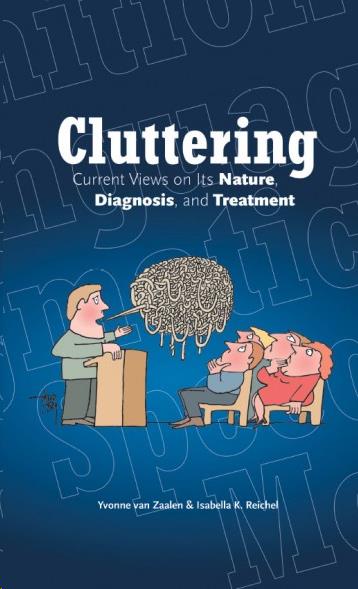About the Book

While most people around the world have an idea of what stuttering is all about, most are not familiar with the fluency disorder of cluttering. Cluttering is a disorder of speech fluency in which people are not able to adjust their speech rate to the syntactic (grammar) or phonological (word structure) demands of the moment (van Zaalen, 2009). PWC often say: “I think I stutter, but actually it is not real stuttering.” Or they say “Others always complain that I am not intelligible and speak too fast, and I want to get rid of these complaints.”
No one speaks absolutely fluently (Ward, 2006). Even the most articulate speaker makes errors every once in a while. Most people probably produce more errors than they realize. Different speech errors may occur. People can add sounds or words to gain some time, such as “uh” or “well.” People can also repair the sentence structure during speech production when they notice that the sentences or words they just used do not have the expected or desired results. Repeating words or stumbling over words are other well known speech errors. Professional comedians sometimes intentionally employ these errors in exaggerated form to be funny.
Drs. Yvonne Van Zaalen and Isabella Reichel, internationally renowned experts about cluttering, have drawn on their extensive experience in working with people who clutter to prepare a comprehensive guide that covers everything a clinician needs to know about cluttering, from theory to diagnosis to treatment and beyond.
Cluttering includes personalized explanations that help readers truly understand the complicated disorder known as cluttering, along with numerous therapy activities and exercises that can be directly incorporated into treatment for people who clutter.
Potentially confusing topics are presented with clarity, controversies are explained in accessible terms, and the varied presentations of the condition are sorted so clinicians can approach their clients in an orderly and organized fashion.
Examples of the types of information presented include: defining cluttering (including historical perspectives), differential diagnosis between cluttering and stuttering (as well as numerous other conditions), public awareness and perceptions of cluttering, a wide range of key symptoms for clinicians to evaluate, detailed diagnostic procedures that examine more than just overt speech behaviors, and a careful consideration of therapy development and planning.
____________________________
- Publisher: iUniverse (January 8, 2015)
- Language: English
- ISBN-10: 1491743271
- ISBN-13: 978-1491743270